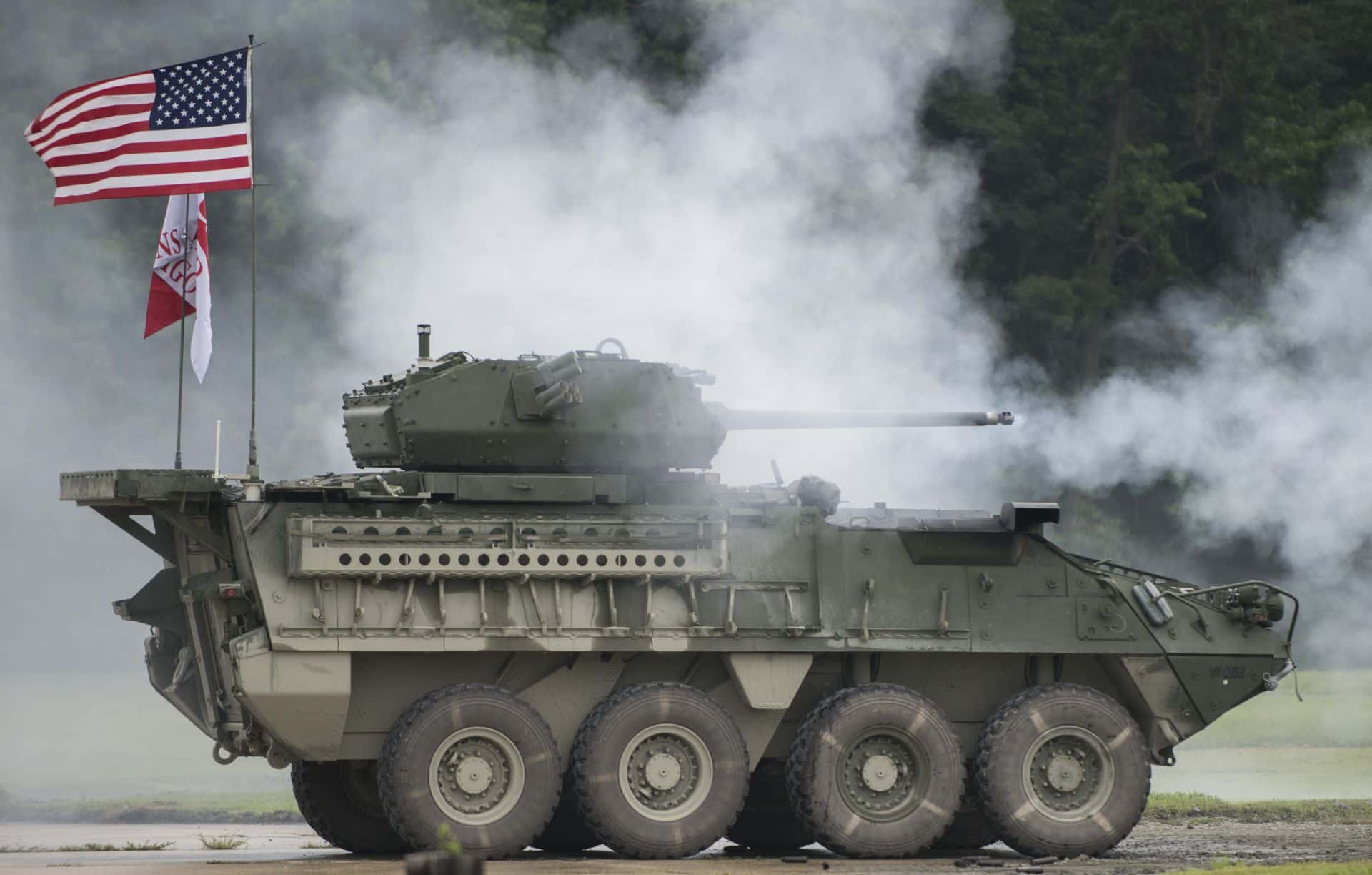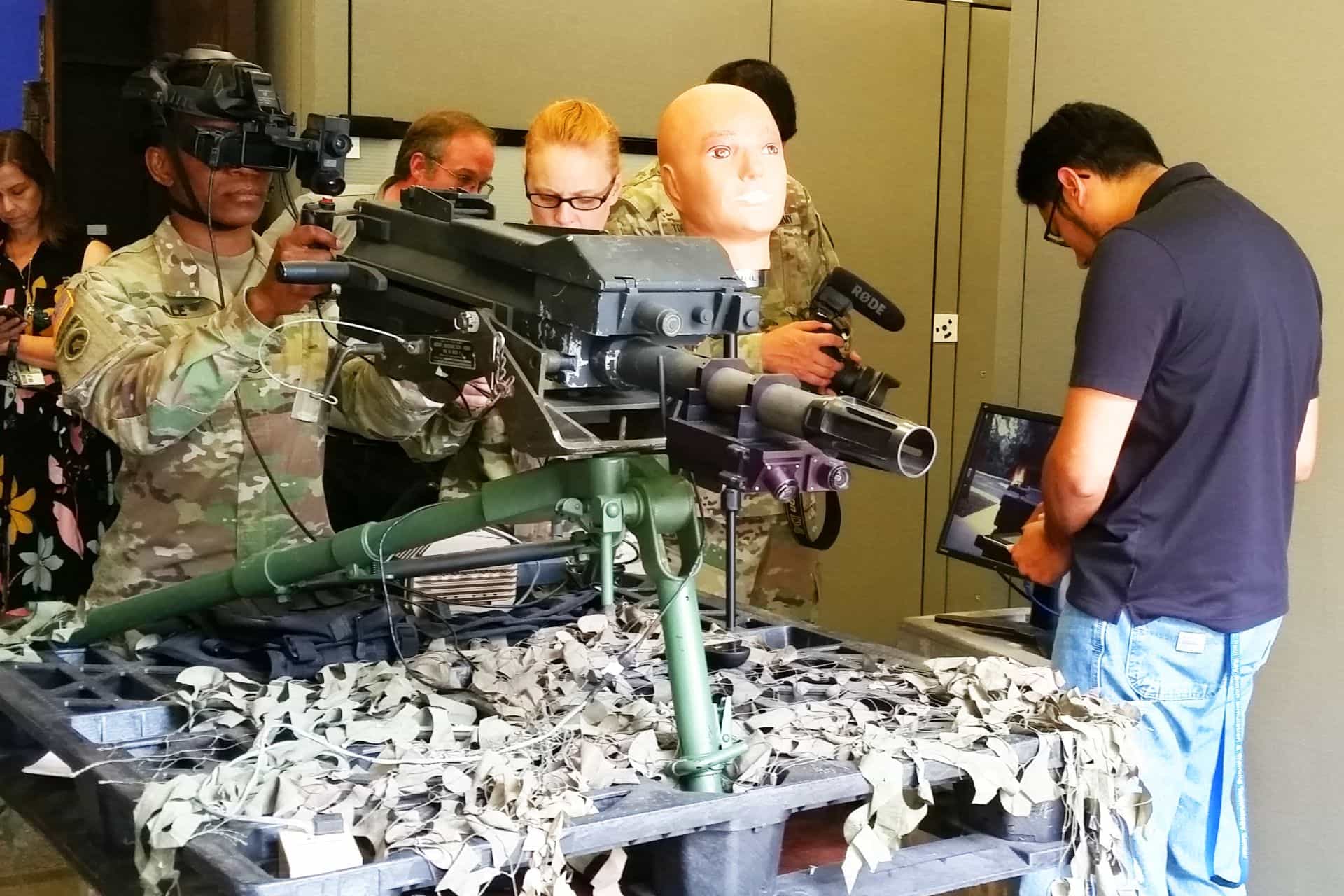As one of the first Soldiers to shoot a powerful 30 mm cannon from a new Stryker combat vehicle, Staff Sgt. Randall Engler was excited about what the weapon could do for his infantry squad.
“It’s empowering,” said Engler, of the 2nd Cavalry Regiment, which has asked the Army to give its Stryker fleet more lethality to deter Russia and other near-peer threats. “You’re laying that hate [on a target] with a bigger round. It’s doing a lot more damage and you’re getting better effects.”
Engler and 14 others from the regiment recently traveled from Germany to Aberdeen Proving Ground as part of a six-week test and training event on the new Stryker Infantry Carrier Vehicle, which is nicknamed “Dragoon” after the unit.
The Soldiers also tested the new CROWS-J system, a common remote-operated weapons station that allows troops to fire Javelin anti-tank guided missiles from the safety inside existing Stryker models.
“We try to get users on the platform early on, that’s why there are crews from [2nd Cavalry] here now,” said Col. Glenn Dean, the Army’s Stryker program manager, during a media event Tuesday at Aberdeen.
Six Stryker vehicles from each 30 mm cannon and Javelin variant are slated to head to Germany this January, where more 2nd Cavalry Soldiers will be able to share their input. The Army hopes to field the combat vehicles in a forward location next summer when the regiment’s 1st Squadron is expected to go to Poland, Dean added.
NEAR-PEER THREATS
The regiment requested more firepower for its 81 Stryker ICVs due to the recent military operations of Russia, which has shown hostility in parts of Eastern Europe.
“This capability coming to [2nd Cavalry] is directly attributable to Russian aggression and we are actively working with our foreign partners in how to help shape our formation,” said Lt. Col. Troy Meissel, the regiment’s deputy commanding officer.
The limited number of American forces stationed in Europe also led to the request. Back in the Cold War, there were roughly 300,000 U.S. Soldiers in Europe. Now, there are only about 30,000, he said.
“How do we, as an Army, make 30,000 Soldiers feel like 300,000?” he asked. “This new ICV-D [Infantry Carrier Vehicle-Dragoon] is one of the ways that can help us do that.”
While the weapon upgrades are not meant to change the Stryker into a fighting vehicle, the new vehicles can help infantrymen be more effective in battle. “It allows us to get to the right place at the right time to close in and destroy the enemy,” Meissel said.
QUICK ACQUISITION
The acquisition of the 30 mm cannon-equipped Stryker, which began in the fall of 2015, was a relatively quick process. It took about 15 months from the receipt of funds to the delivery of ICV-D prototypes, said Maj. Gen. David Bassett, program executive officer for the Army’s ground combat systems.
“You’re seeing an acquisition timeline that was not driven by bureaucracy, but was driven by the actual activities and underlying tasks that we needed both our contractors and the Army team to do together,” Bassett said.
The Dragoon vehicles also incorporated equipment from other Stryker variants, such as a mature turret that didn’t require much software development and a mature chassis with a suspension that was already proven by the Stryker double-v hull program.
“One of the ways you make acquisition go faster is by picking things that don’t require as much as those activities,” he said. “It’s not too long before you’re hit with a very low probability of success if you’re bringing in too many new things that are unproven.”
The process, he added, demonstrated his office’s commitment to get systems to Soldiers in a timely manner. “I’m not interested in developing [systems], I’m interested in delivering [them],” he said.
While additional resources have already been asked to equip a second brigade with the new vehicles, the general expects there could be modifications to the vehicle as more 2nd Cavalry Soldiers give their feedback.
“It would be more efficient in terms of resources to wait but our adversaries aren’t waiting,” he said, “so we’re looking to lean forward to provide capabilities sooner rather than later.”
Cost savings in hardware, though, as well as novel approaches to business operations and leveraging partner investments in the Dragoon vehicle program, have freed up money for the regiment to add another weapon system to its arsenal — the remote Javelin system.
Stryker vehicles with the CROWS-J system will roll out to the regiment at the same time as the ICV-D vehicles, according to Dean, the program manager. “I didn’t have to go back to the Army or Congress and ask for another dollar to execute this,” he said.
TIGHT SHOT GROUP
During the recent 30 mm cannon testing at Aberdeen, Soldiers saw a vast improvement in accuracy compared to the .50-caliber machine gun, which is mounted on many Stryker vehicles.
“With this, we’re seeing a shot group about the size of a basketball,” Sgt. 1st Class Nicholas Young, senior NCO of the Army’s Stryker program, said of the remote-operated cannon hitting a target at 1,800 meters away. “If I aim at something, I know I’m going to hit it and I’m going to do damage to it.”
Soldiers do lose some situational awareness after designers had to accommodate the large cannon on the unmanned turret. Vision blocks in the front of the Stryker have been added and there’s the possibility of putting cameras on future vehicles, depending how 2nd Cavalry formations react to the vehicles in testing.
“It will take some getting used to,” Young said of the loss of situational awareness, “but eventually we’ll be able to find some solutions to integrate into the vehicle to assist with that.”
If given the choice between a hatch to look out of and a 30 mm cannon capable of shooting 200 rounds per minute, many Soldiers may prefer the extra lethality.
“I know it makes me feel more comfortable out there because it’s a bigger round,” Engler said, adding it could force enemies to think twice before attacking. “It’ll make them second guess [because] now it’s going to be a substantially different fight.”











